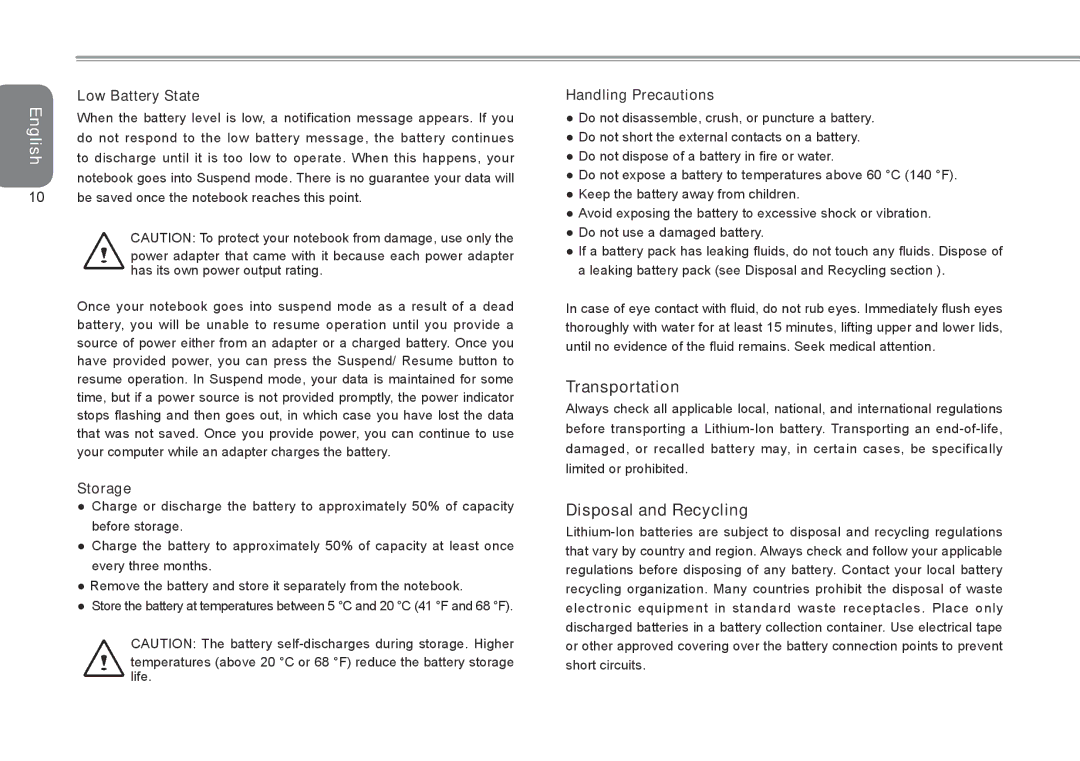
English
10
Low Battery State
When the battery level is low, a notification message appears. If you do not respond to the low battery message, the battery continues to discharge until it is too low to operate. When this happens, your notebook goes into Suspend mode. There is no guarantee your data will be saved once the notebook reaches this point.
CAUTION: To protect your notebook from damage, use only the power adapter that came with it because each power adapter has its own power output rating.
Once your notebook goes into suspend mode as a result of a dead battery, you will be unable to resume operation until you provide a source of power either from an adapter or a charged battery. Once you have provided power, you can press the Suspend/ Resume button to resume operation. In Suspend mode, your data is maintained for some time, but if a power source is not provided promptly, the power indicator stops flashing and then goes out, in which case you have lost the data that was not saved. Once you provide power, you can continue to use your computer while an adapter charges the battery.
Storage
●Charge or discharge the battery to approximately 50% of capacity before storage.
●Charge the battery to approximately 50% of capacity at least once every three months.
●Remove the battery and store it separately from the notebook.
●Store the battery at temperatures between 5 °C and 20 °C (41 °F and 68 °F).
CAUTION: The battery
temperatures (above 20 °C or 68 °F) reduce the battery storage life.
Handling Precautions
●Do not disassemble, crush, or puncture a battery.
●Do not short the external contacts on a battery.
●Do not dispose of a battery in fire or water.
●Do not expose a battery to temperatures above 60 °C (140 °F).
●Keep the battery away from children.
●Avoid exposing the battery to excessive shock or vibration.
●Do not use a damaged battery.
●If a battery pack has leaking fluids, do not touch any fluids. Dispose of a leaking battery pack (see Disposal and Recycling section ).
In case of eye contact with fluid, do not rub eyes. Immediately flush eyes thoroughly with water for at least 15 minutes, lifting upper and lower lids, until no evidence of the fluid remains. Seek medical attention.
Transportation
Always check all applicable local, national, and international regulations before transporting a
